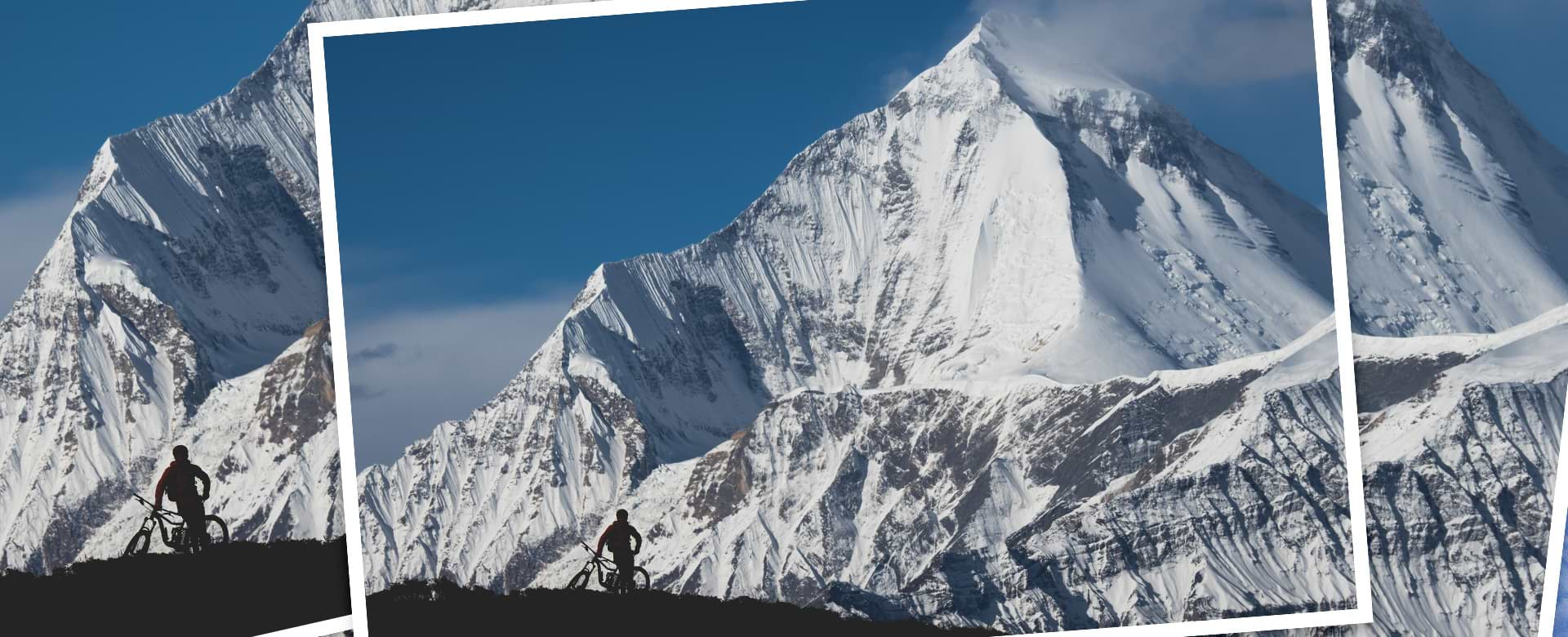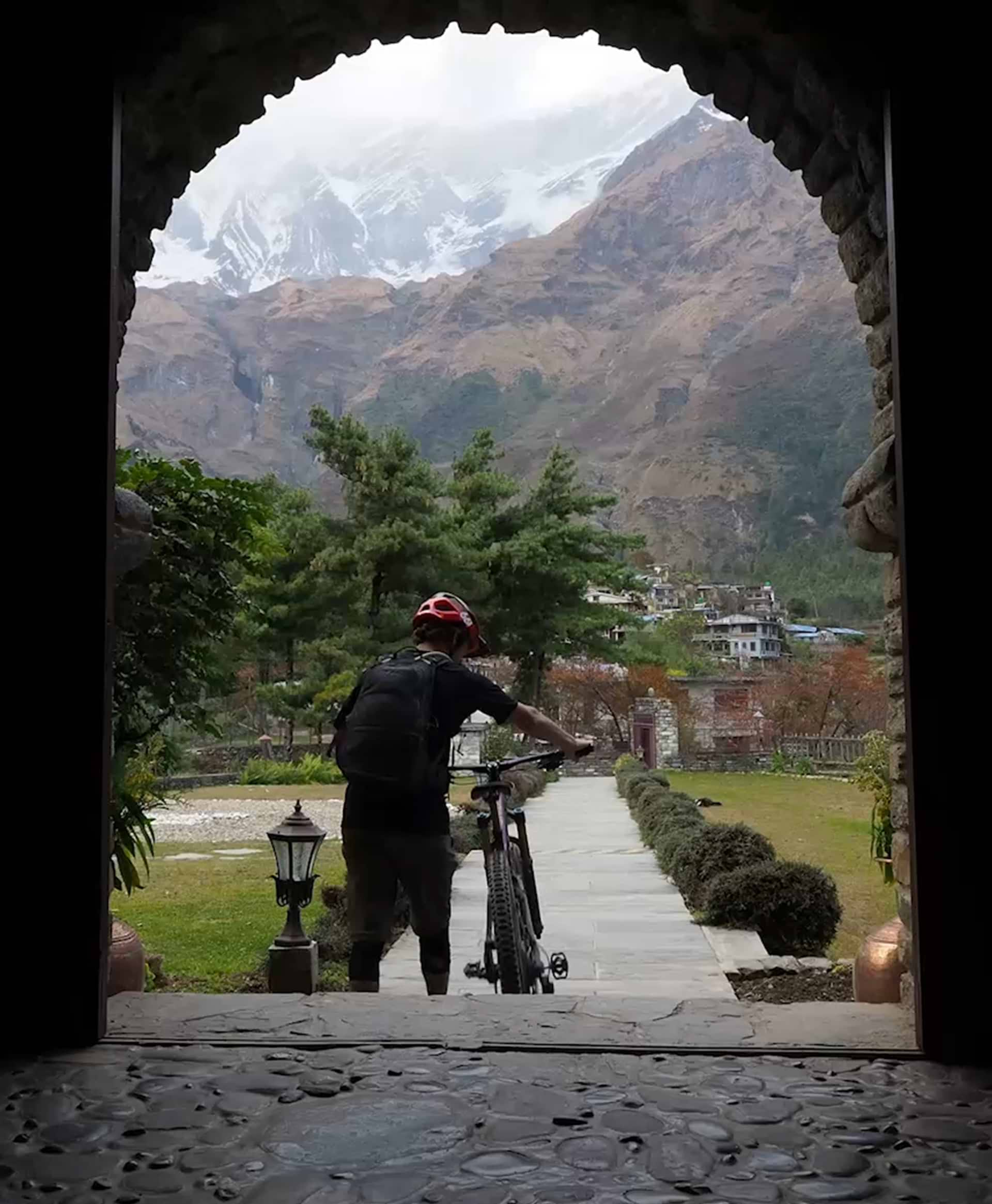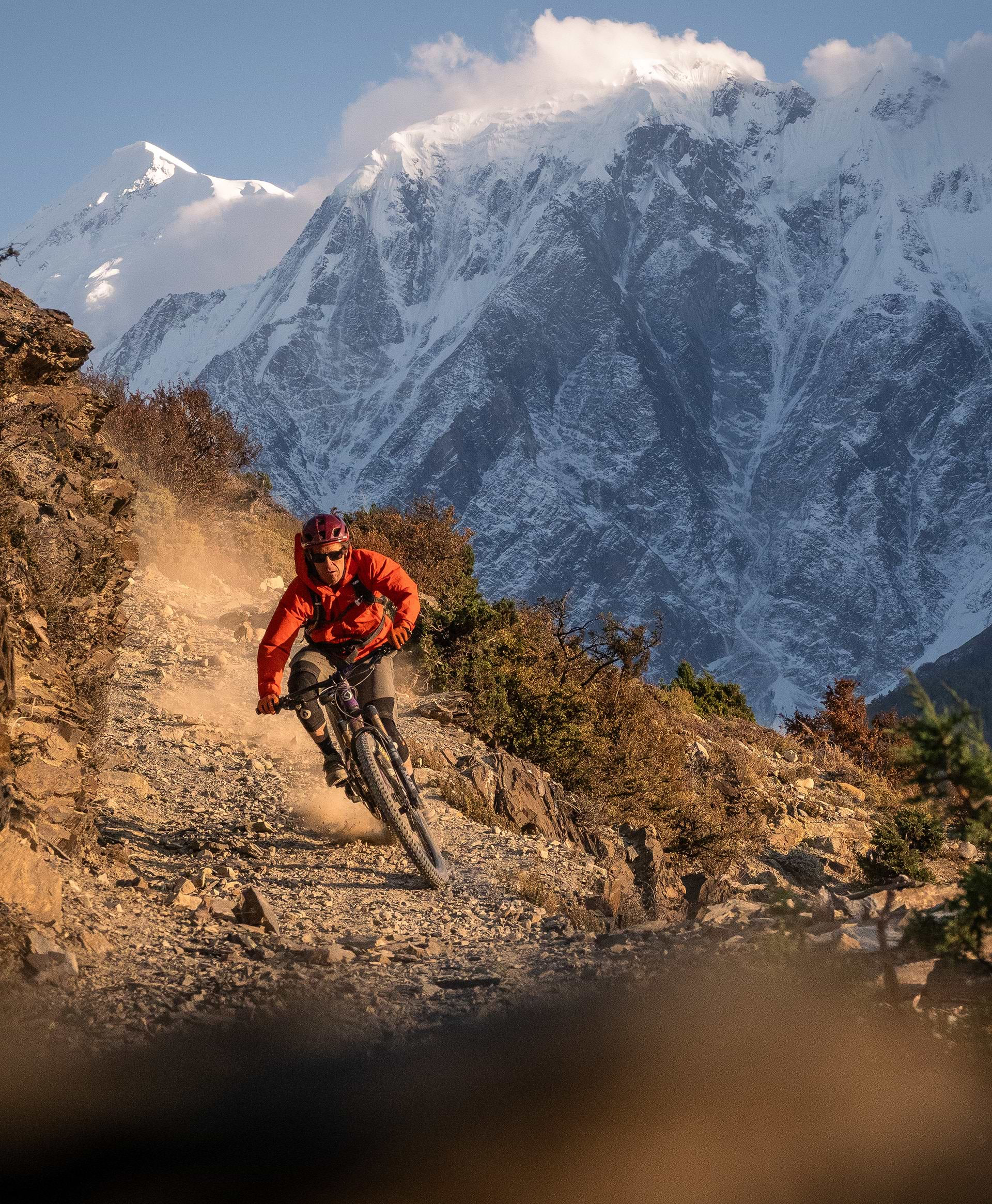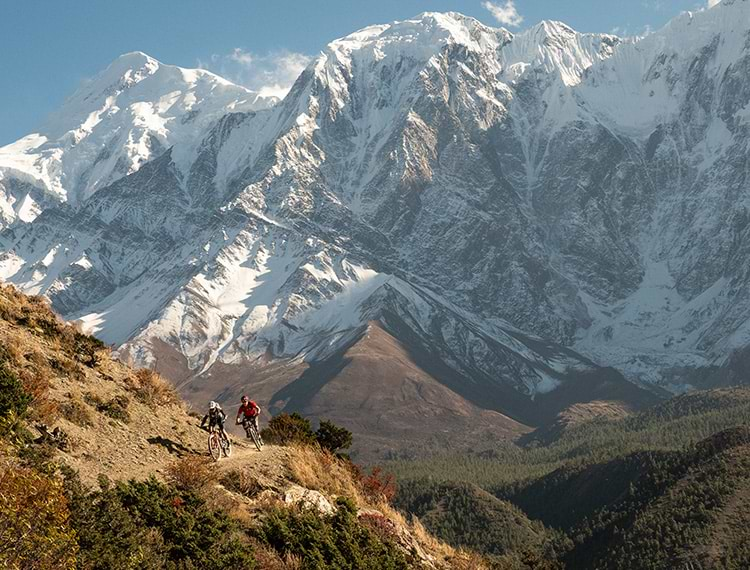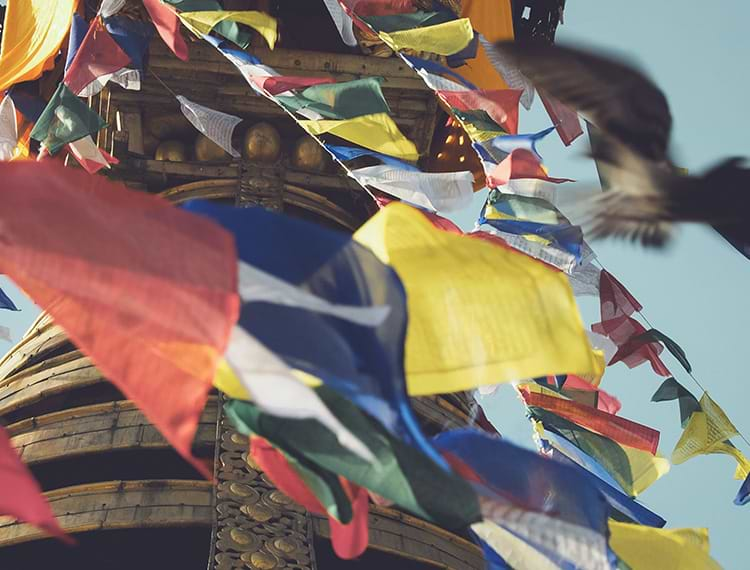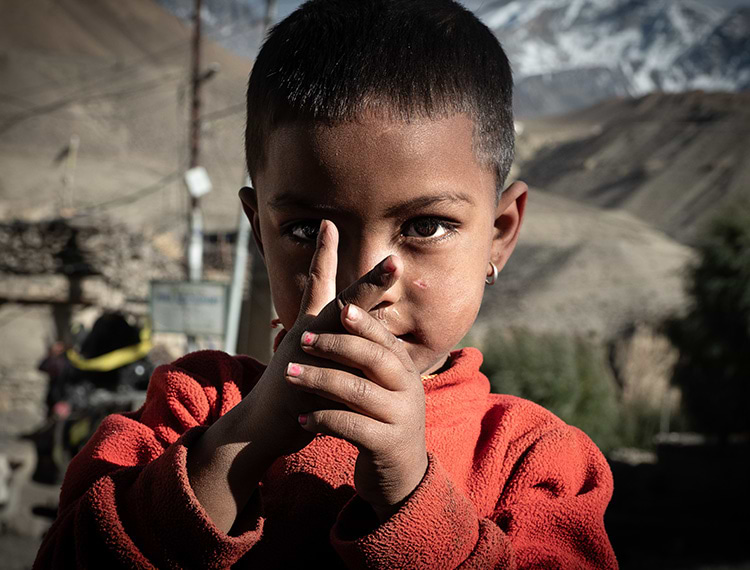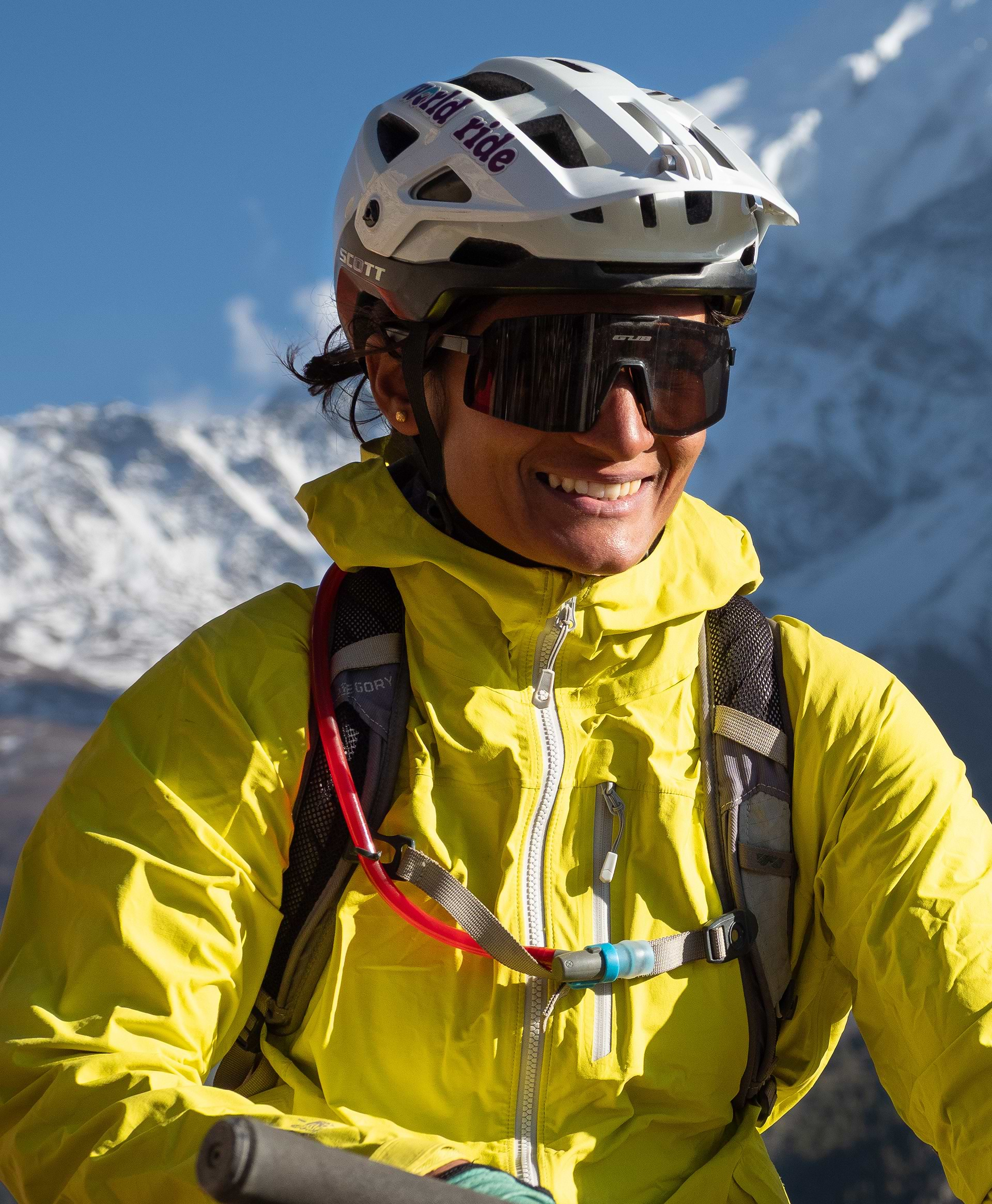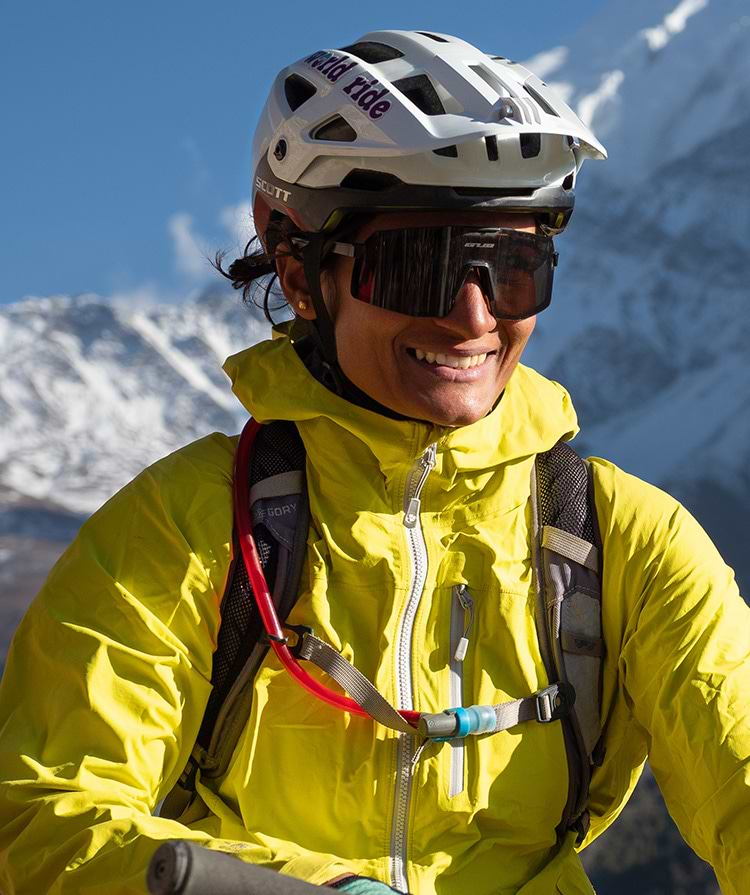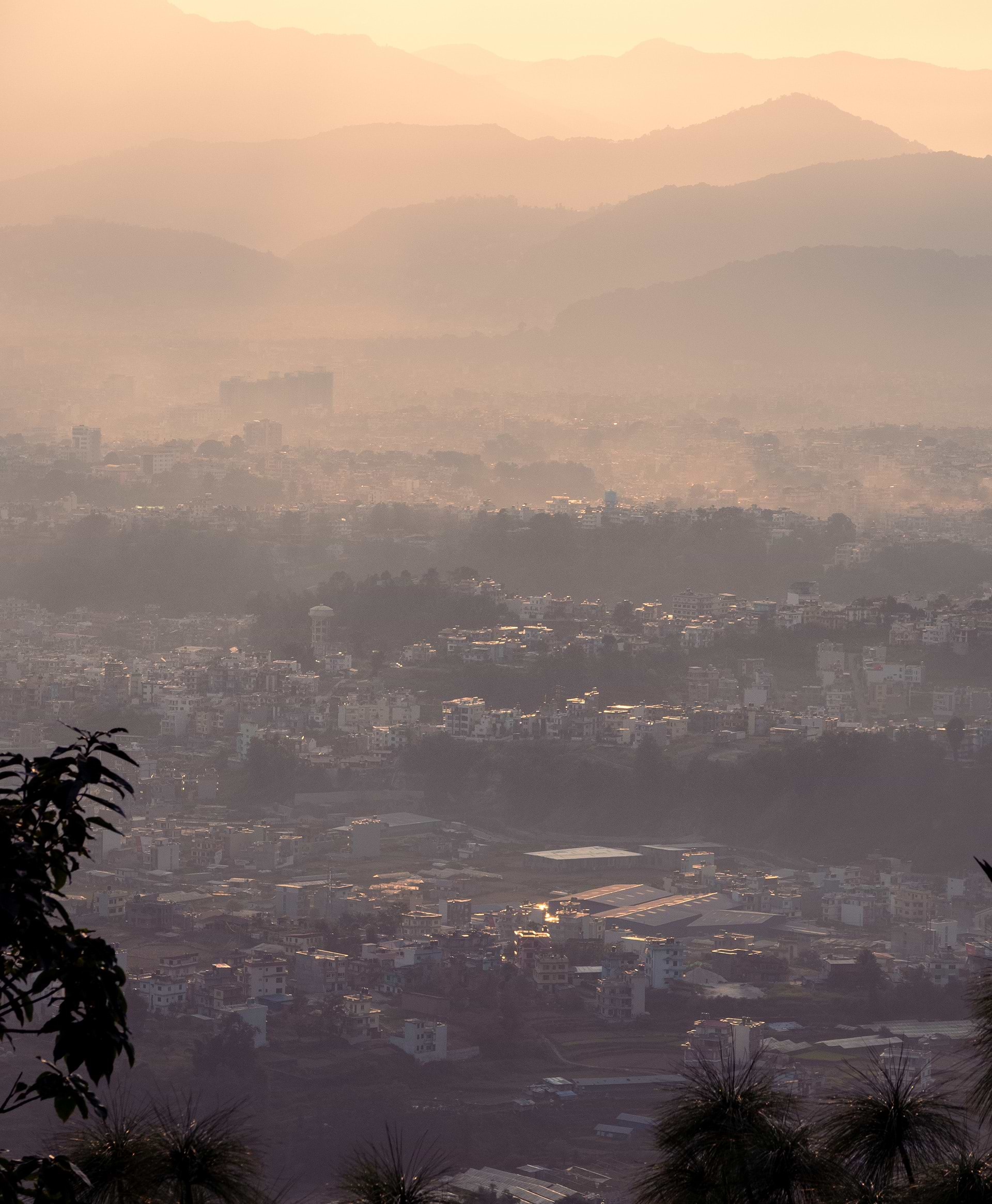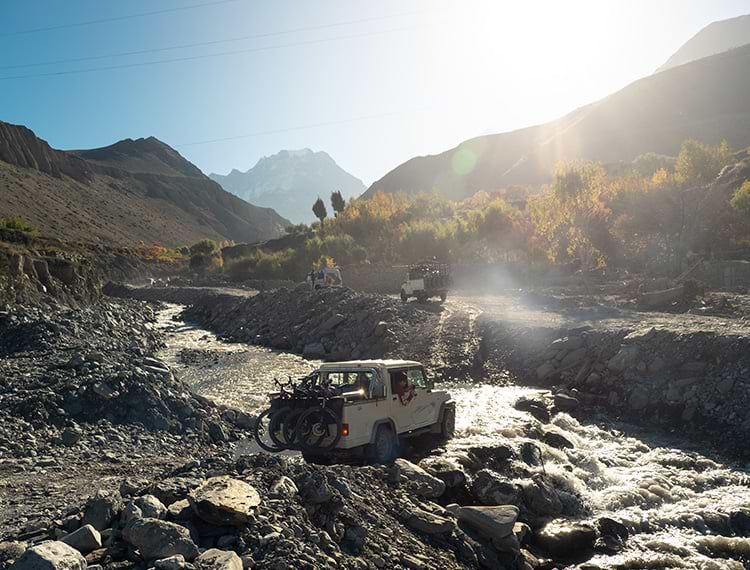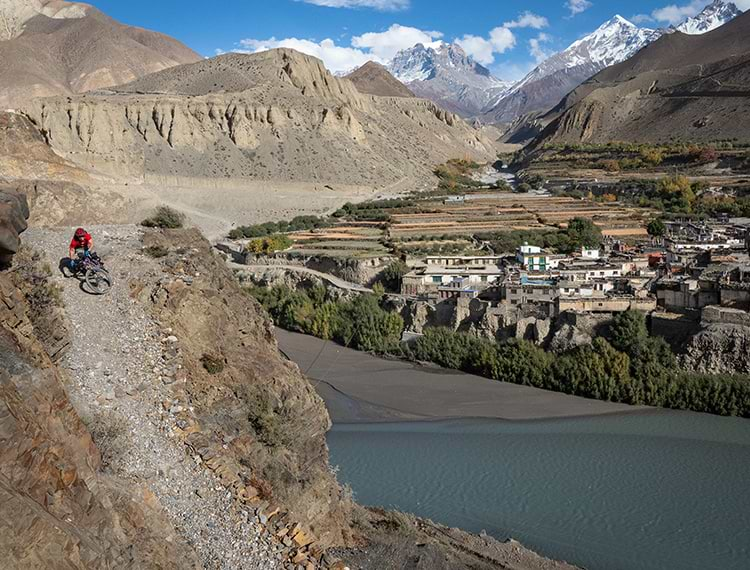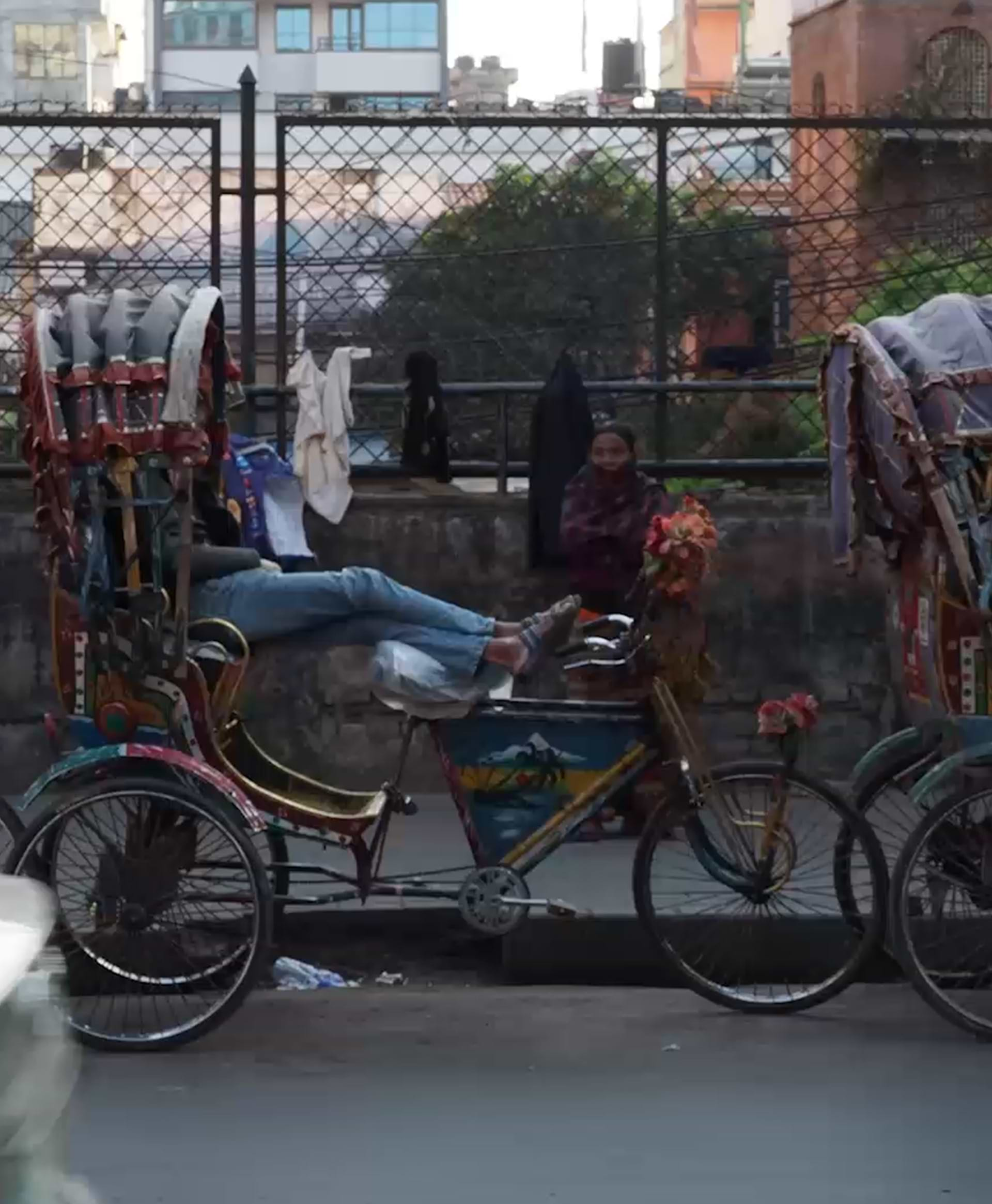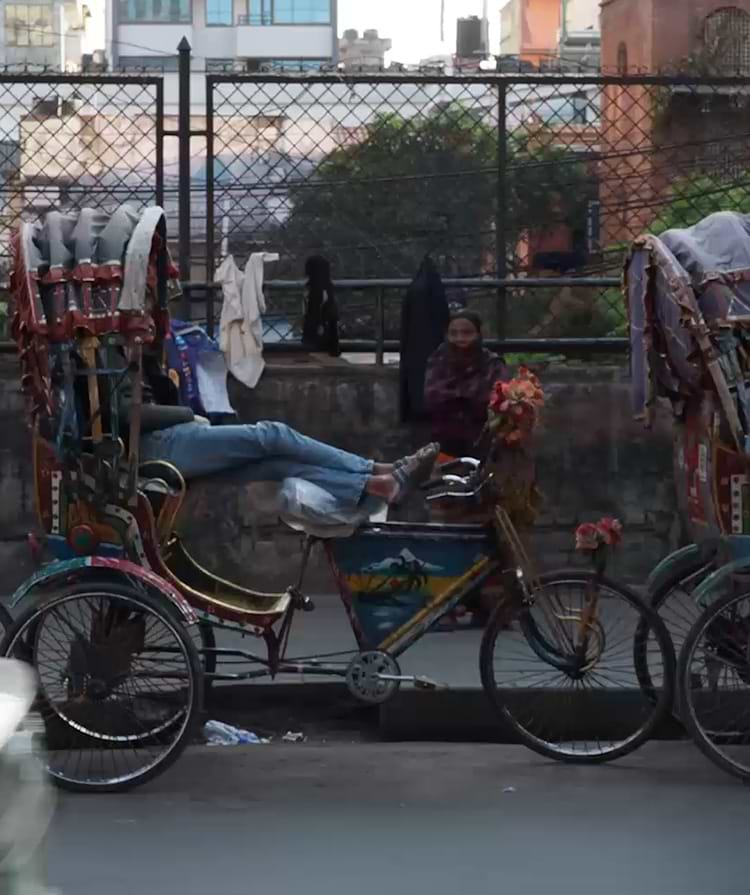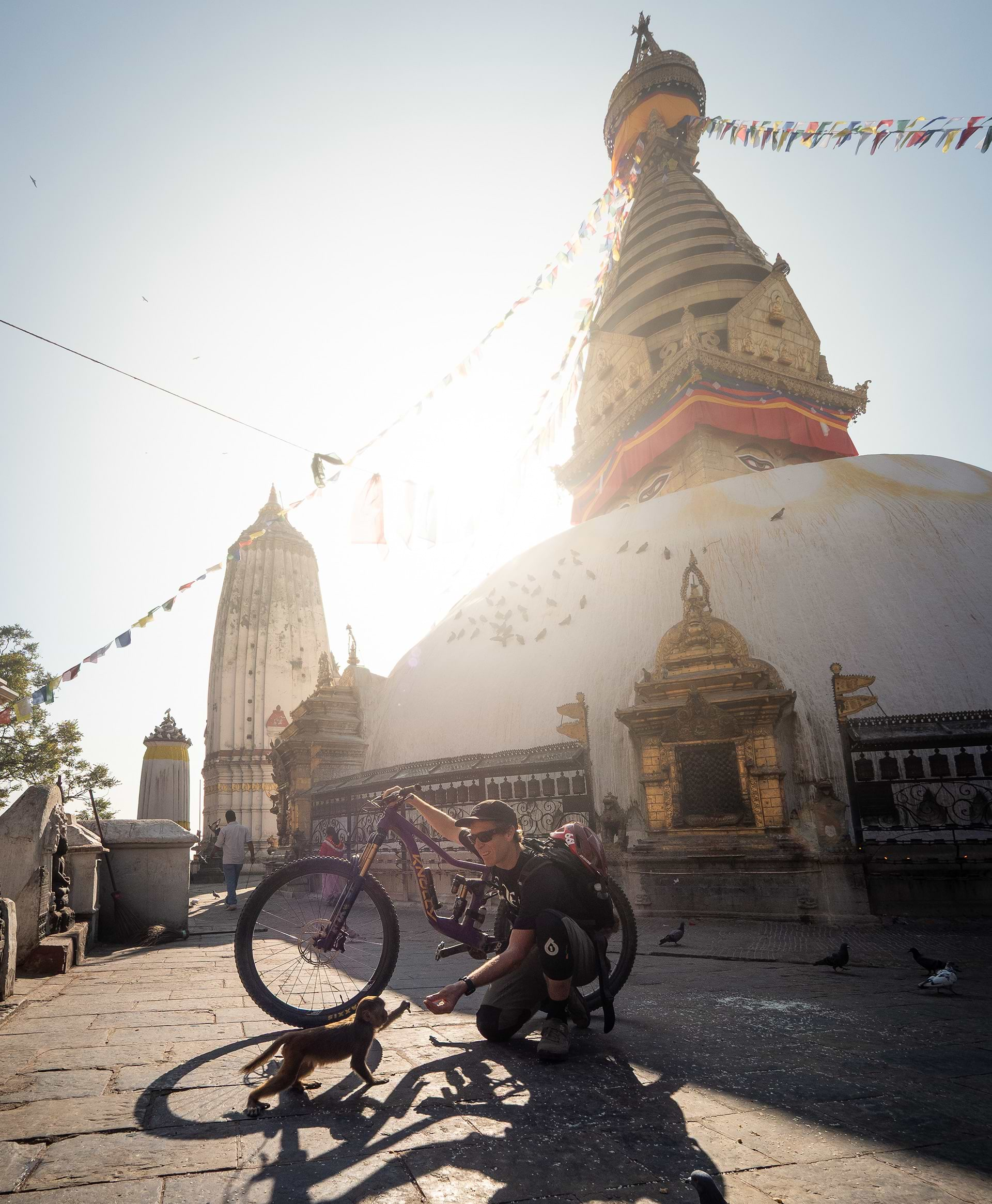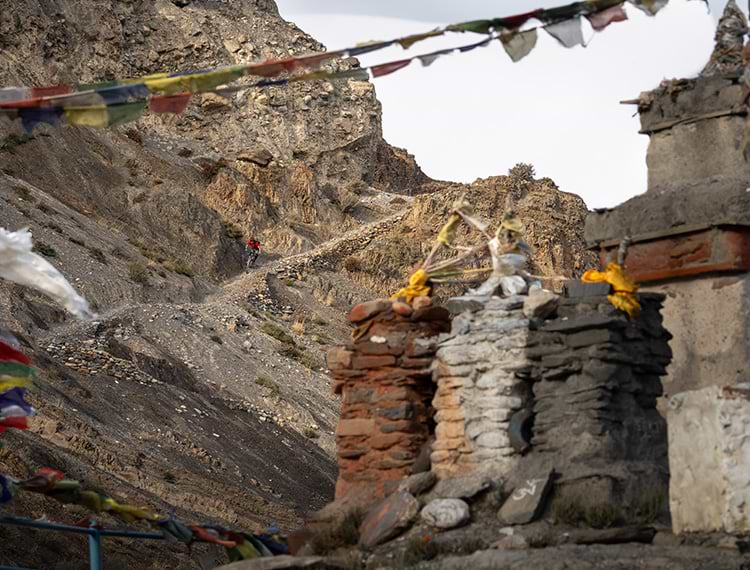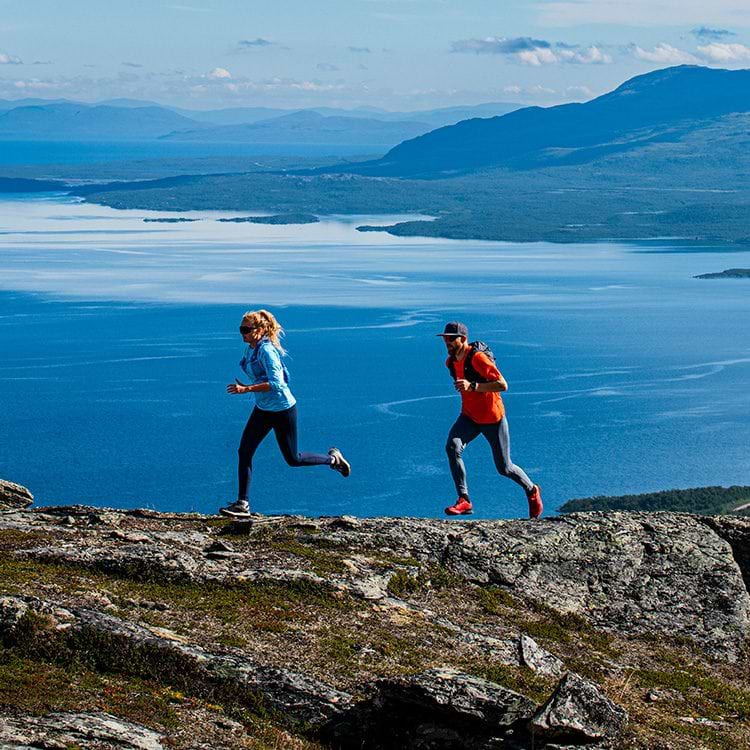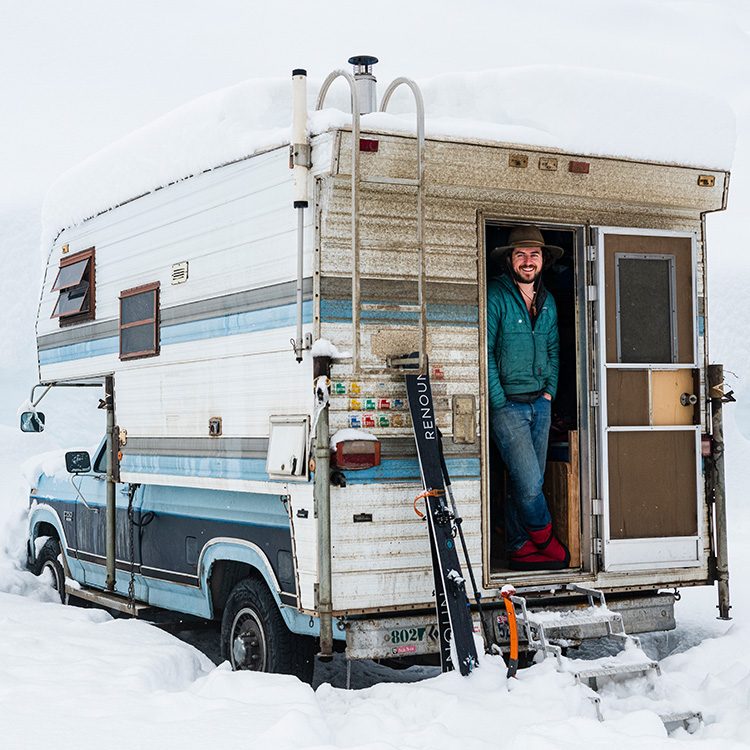Having lived and traveled through the mountain ranges of the Northern Hemisphere, I knew that November is not the ideal month to plan a biking trip in high mountains, let alone in the highest mountains on the planet. But that’s precisely what we’re doing — searching for singletrack around Annapurna, the 10th-highest peak in the world.
My mind began to emerge from its narrow box of preconceptions as my travel companion, Steve Storey, and I landed in sub-tropical Kathmandu—the bustling capital city of Nepal, home to around four million people in its metro area. The heat was intense for my Canadian November barometer, and the traffic, unencumbered by only three stoplights throughout the city, spewed black smoke, undulating in chaotic harmony. Our nerves were immediately tested as we attempted to cross ten lanes of traffic. The honking cacophony included every wheeled transport imaginable—motorbikes, tuk-tuks, lorries, and colorful buses—alongside us on humble bicycles. A mix of hand signals, eye contact, and brazen ignorance helped us navigate the madness and into a maze of alleyways expertly traversed by our local guide, Suman Thapa, as we pedaled into the hills for our first descent.
Every shade of green imaginable adorns the primary jungle of Shivapuri National Park above the city. Vines grow on plants that cling to trees which tower over other trees, and the symphony of insects is deafening. As we traverse the corrugated hillsides fanning out from a small military outpost guarding the park, painfully stinging vines pierce exposed skin and gloves, shirts, and socks, serving as a burning reminder to stay on the trail. Ahead, a line of singletrack traces the spine of a long green ridge that lies like a dormant dragon amidst the urban sprawl and into the enveloping smog of the city center. At the top of an infinite number of steps that mark our descent, a group of children plays on a wobbling, flexing bamboo swing set that appears to be slowly inching closer to the steep precipice below. Unconcerned or oblivious, the danger is irrelevant to their fun and mirrors our carefree excitement as we descend into unknown terrain.
Pokhara is Nepal’s second-largest city and the gateway to the western Himalayas. The 26,247-foot peaks (8,000 meters) of Annapurna, Dhaulagiri, and Manaslu are tantalizingly close. However, Prime Minister Pushpa Kamal Dahal and visiting dignitaries delayed our short flight on a morning excursion to Annapurna Base Camp. Hours later, our tiny plane shook violently against a fierce headwind as we craned upward to see the towering peaks on our way to Jomsom.
Our riding partner for the day is Usha Khanal, a national champion in cross-country and downhill, as well as a mountain biking guide. After our late and bumpy arrival, we shuttle up to 12,140 feet and ride one of the most scenic descents in Nepal. The trail winds across the hillside opposite Nilgiri (23,166 feet), which feels deceptively close due to its massive scale. A lot of focus is needed to control our speed. The trail is so much fun that it’s tempting to release the brakes and race down to the valley, but the loose gravel, violent wind gusts, and hazardous risk of tumbling down the incredibly steep hillside keep us in check.
Thapa and Khanal are part of the burgeoning bike-guiding industry. Traditionally relying on trekking and climbing expeditions for work, mountain biking is gaining traction in the high mountains of the Himalayas, and the ancient trekking routes offer unlimited possibilities for strenuous climbs, lengthy traverses, and breathtaking descents. It is also easier on the knees than trekking. Khanal is one of only five female mountain bike guides in Nepal and has faced a long journey to create a biking-focused life for herself. After dodging a traditional Hindu arranged marriage at age 17, she channeled her natural athleticism and love for the outdoors into cycling, carving an unconventional path in a very traditional society. Guiding has provided the perfect balance for her to earn a living while staying fit for her racing season, during which she represents Nepal on the global stage
Our accommodation in the small mountain village of Kagbeni is a 500-year-old monastery converted into a guesthouse. By chance, Storey and I have scored ‘the honeymoon suite’—more like an unheated wooden tent than a hotel room. Perched on the rooftop, we enjoy 360-degree views, have one of the most extensive beds I’ve ever seen, and a strange glass-walled bathroom. A strict ‘no eye contact’ policy is enforced for bathroom use, and we take advantage of the rooftop to enjoy a Gorkha extra strong—the local 9% beer—to calm my nerves after a brief brush with death.
A few minutes earlier, while navigating the narrow mud-brick alleys leading to the guesthouse’s entrance, I turned around upon hearing the sound of running hooves and saw a gigantic bull racing towards me with horns nearly the full width of the alley. I pressed myself against the wall and narrowly avoided impalement. Chasing the bull was an elderly grandmother who, upon seeing me pinned to the wall with wide eyes, let out a hearty, toothless cackle.
While ascending to our highest pass, While ascending to our highest pass, just shy of 16,400 feet, one key feature of the landscape becomes apparent—a stark lack of natural color. Each snippet of color here has been added by people: from the bright leaves in orchards to vibrant clothing and the ever-present prayer flags that adorn every mountain pass, temple, and suspension bridge. In Tibetan Buddhism, there are five primary colors: Blue—purity and healing; White—learning and knowledge; Red for life force; Green—balance and harmony; and Yellow represents earth and connection.
Color is vital in a harsh landscape bleached by the sun and scoured by the wind. Yes, physical colors are essential, with religious symbolism adding vibrancy to the otherwise drab color scheme. But, the actual color lies in the faces of the resilient people who call the greatest mountains home. Their welcoming demeanor, affection for humor, and broad smiles infuse the mountains with color, even in November.
